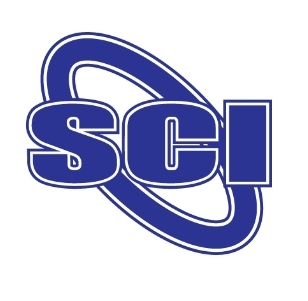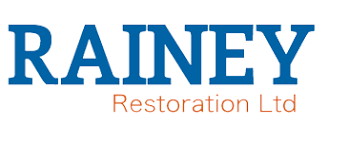Title Page
-
Site conducted
-
Conducted on
-
Prepared by
-
Location
-
Signed
EN001
General
-
Suitable for work use
-
Loose steps or rungs ( consider loose if they can be moved by hand )
-
Loose, damaged or corroded nails, screws, bolts or other metal parts.
-
Warped, bent or twisted stiles.
-
Cracked, split or broken stiles, braces, steps or rungs.
-
Livers/splinters on stiles, rungs or steps.
-
Damaged, missing or worn non-slip feet.
-
ladder painted ( may hide defects )
Stepladders
-
Wobbly or unstable.
-
Loose or bent hinge spreaders.
-
Broken stop on hinge spreaders.
-
Loose hinges.
Extension Ladders
-
Loose, broken or missing extension locks.
-
Defective locks that do not seat properly when ladder is extended.
-
Deterioration of rope
Location at Time of inspection
-
Place Ladders were stored.
Action required
-
Any action required
-
What action was taken.
EN002
General
-
Suitable for work use.
-
Loose steps or rungs (consider loose if they can be moved by hand)
-
Loose, damaged or corroded nails, screws, bolts or other metal parts.
-
Warped, bent or twisted stiles.
-
Cracked, split or broken stiles, braces, steps or rungs.
-
Slivers/splinters on stiles, rungs or steps.
-
Damaged, missing or worn non-slip feet.
-
Ladder painted (may hide defects)
Stepladders
-
Wobbly or unstable.
-
Loose or bent hinge spreaders.
-
Broken stop on hinge spreaders.
-
Loose hinges.
Extension Ladders
-
Loose, broken or missing extension locks.
-
Defective locks that do not seat properly when ladder is extended.
-
Deterioration of rope.
Location
-
location at time of inspection
Action
-
Any action required
-
What action was taken.
EN003
General
-
Suitable for work use.
-
Loose steps or rungs (consider loose if they can be moved by hand)
-
Loose, damaged or corroded nails, screws, bolts or other metal parts.
-
Warped, bent or twisted stiles.
-
Cracked, split or broken stiles, braces, steps or rungs.
-
Slivers/splinters on stiles, rungs or steps.
-
Damaged, missing or worn non-slip feet.
-
Ladder painted (may hide defects)
Stepladders
-
Wobbly or unstable.
-
loose or bent hinge spreaders.
-
Broken stop on hinge spreaders.
-
Loose hinges.
Extension Ladders
-
Loose, broken or missing extension locks.
-
Defective locks that do not seat properly when ladder is extended.
-
Deterioration of rope.
Location
-
Location at time of inspection
Action
-
Any action required
-
What action was taken.
EN004
General
-
Suitable for work use.
-
Loose steps or rungs (consider loose if they can be moved by hand)
-
Loose, damaged or corroded nails, screws, bolts and other metal parts.
-
Warped, bent or twisted stiles.
-
Cracked, split or broken stiles, braces, steps or rungs.
-
Slivers/splinters on stiles, rungs or steps.
-
Damaged, missing or worn non-slip feet.
-
Ladder painted (may hide defects)
Stepladders
-
Wobbly or unstable.
-
Loose or bent hinge spreaders.
-
Broken stop on hinge spreaders.
-
Loose hinges.
Extension Ladders
-
Loose, broken or missing extension locks
-
Defective locks that do not seat properly when ladder is extended.
-
Deterioration of rope.
Location
-
Location at time of inspection
Action
-
Any action required
-
What action was taken.
EN005
-
Ladders removed from service
EN006
General
-
Suitable for work use.
-
Loose steps or rungs (consider loose if they can be moved by hand)
-
Loose, damaged or corroded nails, screws, bolts or other metal parts.
-
Warped, bent or twisted stiles.
-
Cracked, split or broken stiles, braces, steps or rungs.
-
Slivers/splinters on stiles, rungs or steps.
-
Damaged, missing or worn non-slip feet.
-
Ladder painted (may hide defects)
Stepladders
-
Wobbly or unstable
-
Loose or bent hinge spreaders.
-
Broken stop on hinge spreaders.
-
Loose hinges.
Extension ladders
-
Loose, broken or missing extension locks.
-
Defective locks that do not seat properly when ladder is extended.
-
Deterioration of rope.
Location
-
Location at time of inspection
Action
-
Any action required
-
What action was taken
EN007
General
-
Suitable for work use.
-
Loose steps or rungs (consider loose if they can moved by hand)
-
loose, damaged or corroded nails, screws, bolts or other metal parts.
-
Warped, bent or twisted stiles.
-
Cracked, split, or broken stiles, rungs or steps.
-
Slivers/splinters on stiles, rungs or steps.
-
Damaged, missing or worn non-slip feet.
-
Ladder painted (may hide defects)
Stepladders
-
Wobbly or unstable
-
Loose or bent hinge spreaders.
-
Broken stop on hinge spreaders.
-
Loose hinges.
Extension Ladders
-
Loose, broken or missing extension locks.
-
Defective locks that do not seat properly when ladder is extended.
-
Deterioration of rope.
Location
-
Location at time of inspection
Action
-
Any action required.
-
What action was taken
EN008
General
-
Suitable for work use
-
Loose steps or rungs (consider loose if they can be moved by hand)
-
Loose, damaged or corroded nails, screws, bolts or other metal parts.
-
Warped, bent or twisted stiles.
-
Cracked, split or broken stiles, braces, steps or rungs.
-
slivers/splinters on stiles, rungs or steps.
-
Damaged, missing or worn non-slip feet.
-
Ladder painted (may hide defects)
Stepladders
-
Wobbly or unstable.
-
Loose or bent hinge spreaders.
-
Broken stop on hinge spreaders.
-
Loose hinges.
Extension Ladders
-
Loose, broken or missing extension locks.
-
Defective locks that do not seat properly when ladder is extended.
-
Deterioration of rope.
Location
-
Location at time of inspection.
Action
-
Any action required.
-
What action was taken.
EN009
General
-
Suitable for work use.
-
Loose steps or rungs (consider loose if they can be moved by hand)
-
Loose, damaged or corroded nails, screws, bolts or other metal parts.
-
Warped, bent or twisted stiles.
-
Cracked, split or broken stiles, braces, steps or rungs.
-
Slivers/splinters on stiles, rungs or steps.
-
Damaged, missing or worn non-slip feet.
-
Ladder painted (may hide defects)
Stepladders
-
Wobbly or unstable
-
loose or bent hinge spreaders.
-
Broken stop on hinge spreaders.
-
Loose hinges.
Extension Ladders
-
Loose, broken or missing extension locks.
-
Defective locks that do not seat properly when ladder is extended.
-
Deterioration of rope.
Location
-
Location at time of inspection.
Action
-
Any action required.
-
What action was taken.
EN10
General
-
Suitable for work use.
-
Loose steps or rungs (consider loose if they can be moved by hand)
-
Loose, damaged or corroded nails, screws, bolts or other metal parts.
-
Warped, bent or twisted stiles.
-
Cracked, split or broken stiles, braces, steps or rungs.
-
Slivers/splinters on stiles, rungs or steps.
-
Damaged, missing or worn non-slip feet.
-
Ladder painted (may hide defects)
Stepladders
-
Wobbly or unstable
-
loose or bent hinge spreaders.
-
Broken stop on hinge spreaders.
-
Loose hinges.
Extension Ladders
-
Loose, broken or missing extension locks.
-
Defective locks that do not seat properly when ladder is extended.
-
Deterioration of rope.
Location
-
Location at time of inspection
Action
-
Any action required.
-
What action was taken
EN11
General
-
Suitable for work use.
-
Loose steps or rungs (consider loose if they can be moved by hand)
-
Loose, damaged or corroded nails, screws, bolts or other metal parts.
-
Warped, bent or twisted stiles.
-
Cracked, split or broken stiles, braces, steps or rungs.
-
Slivers/splinters on stiles, rungs or steps.
-
Damaged, missing or worn non-slip feet.
-
Ladder painted (may hide defects)
Stepladders
-
Wobbly or unstable
-
Loose or bent hinge spreaders.
-
Broken stop on hinge spreaders.
-
Loose hinges.
Extension Ladders
-
Loose, broken or missing extension locks.
-
Defective locks that do not seat properly when ladder is extended.
-
Deterioration of rope.
Location
-
Location at time of inspection
Action
-
An action required.
-
What action was taken










